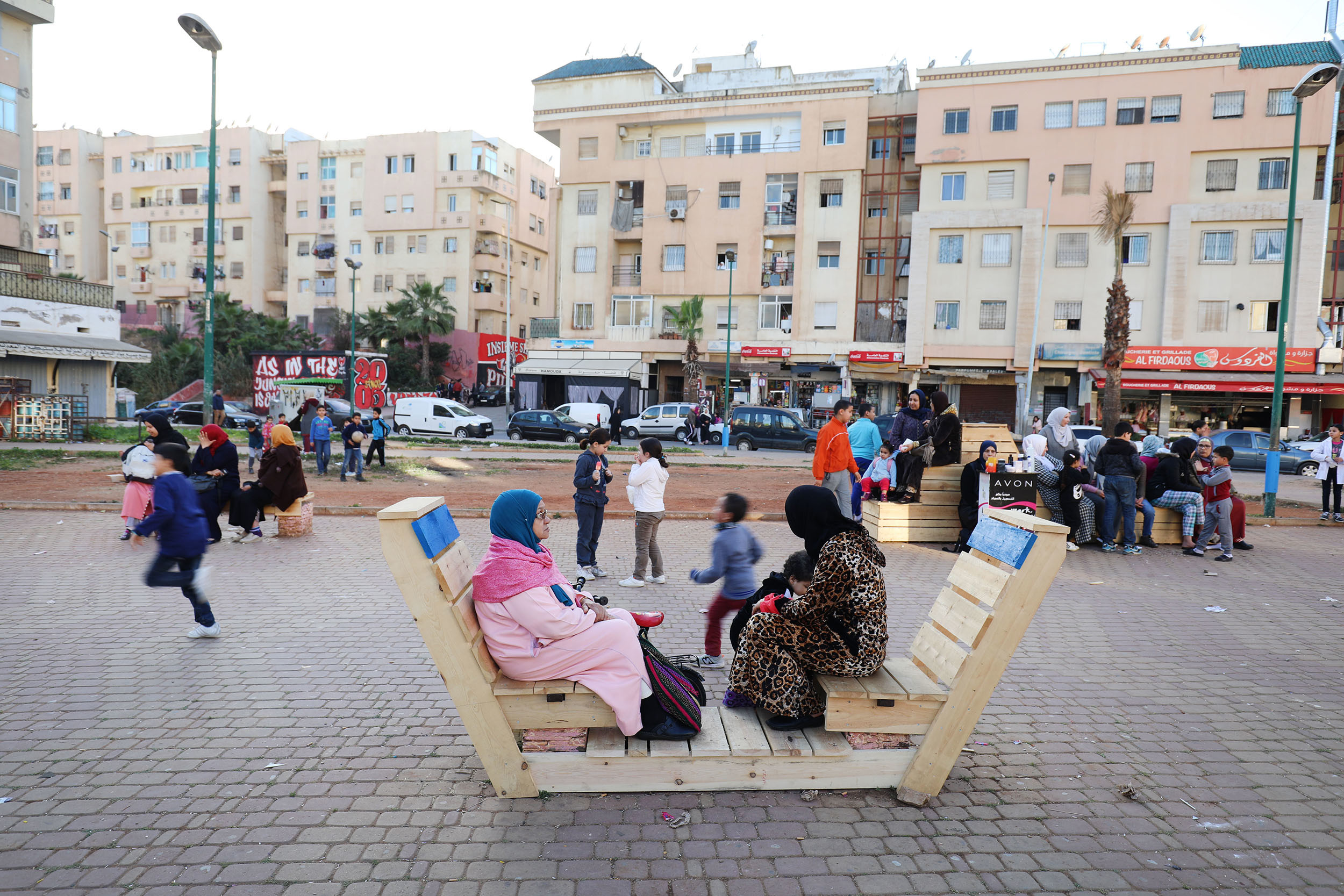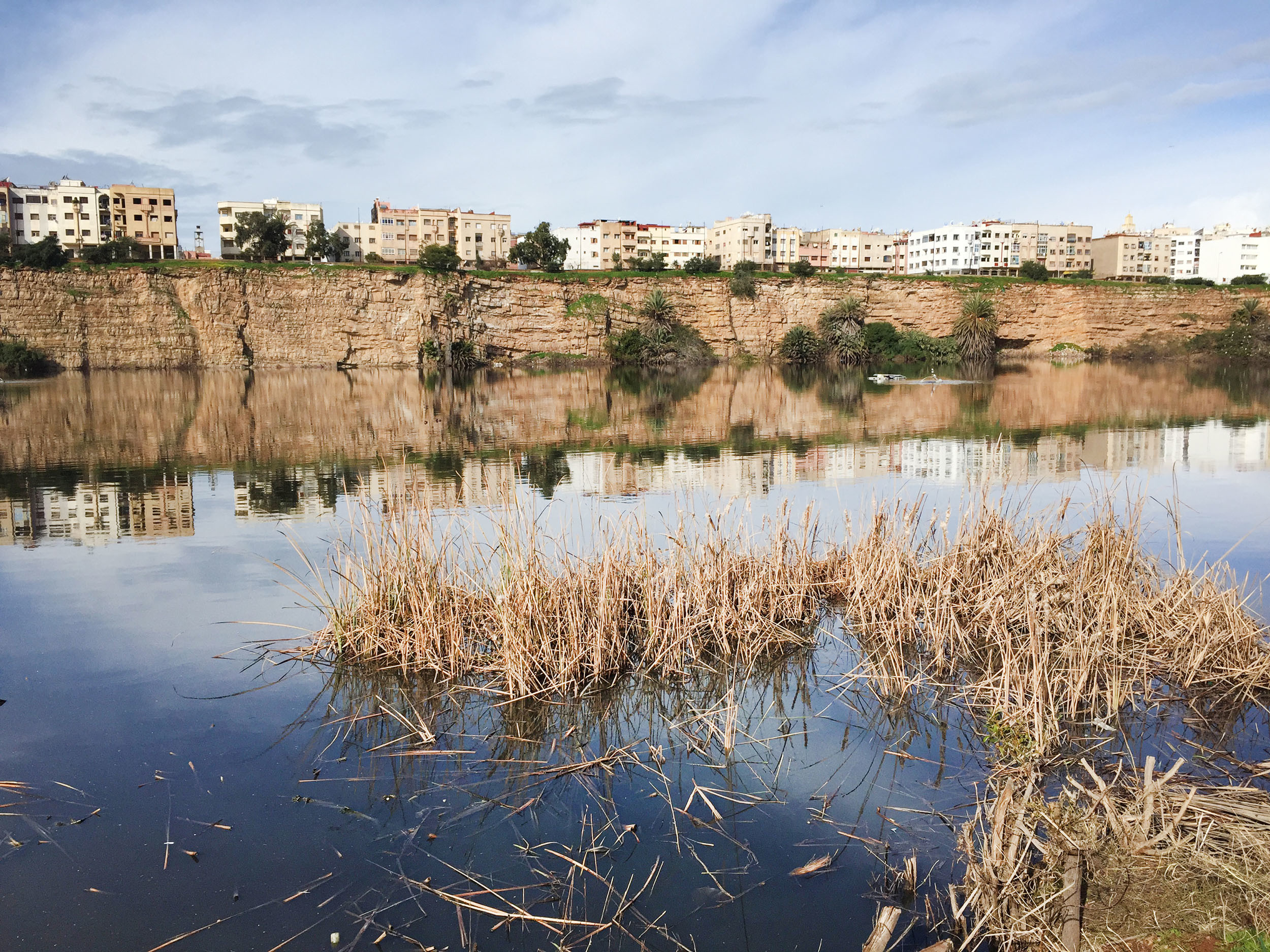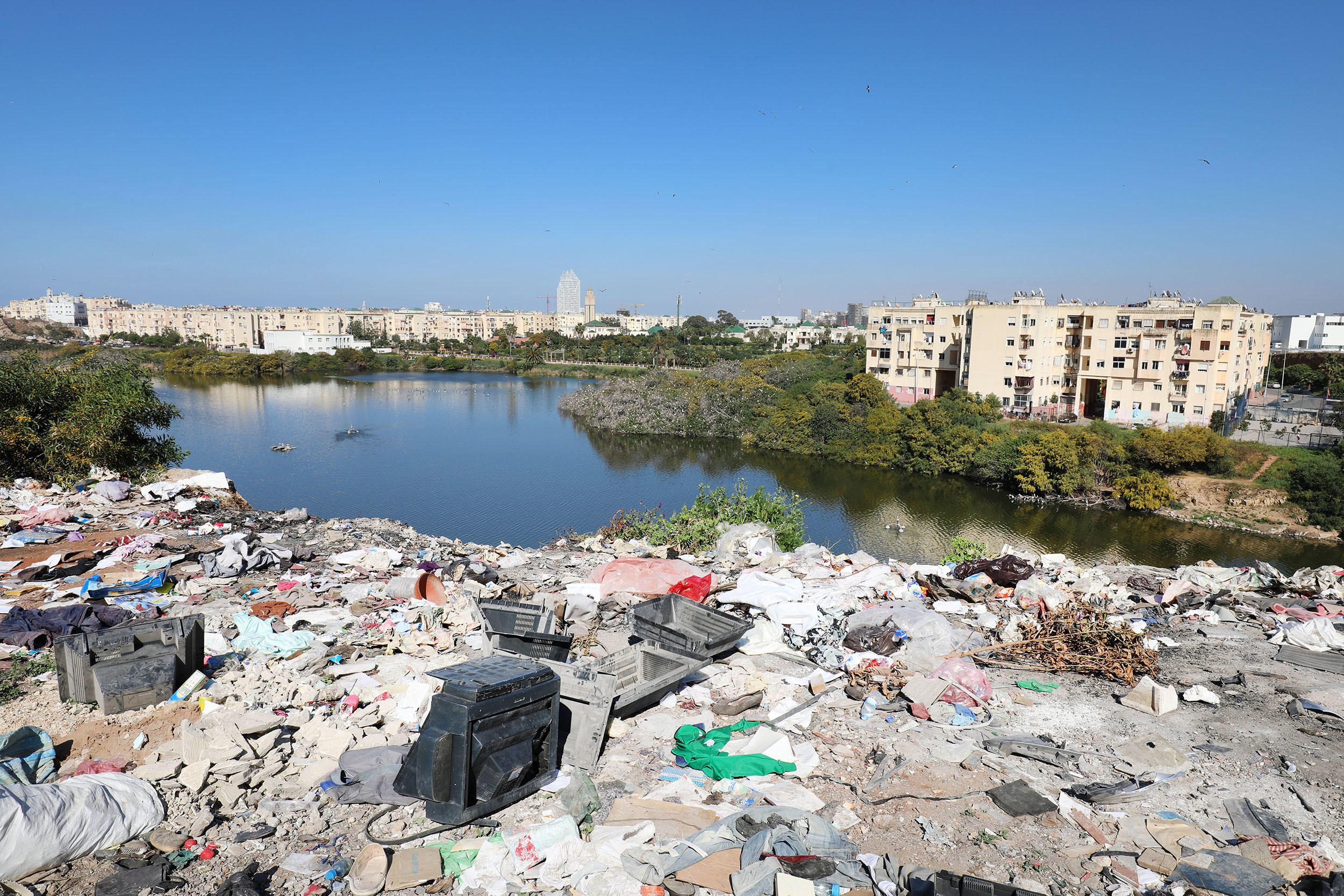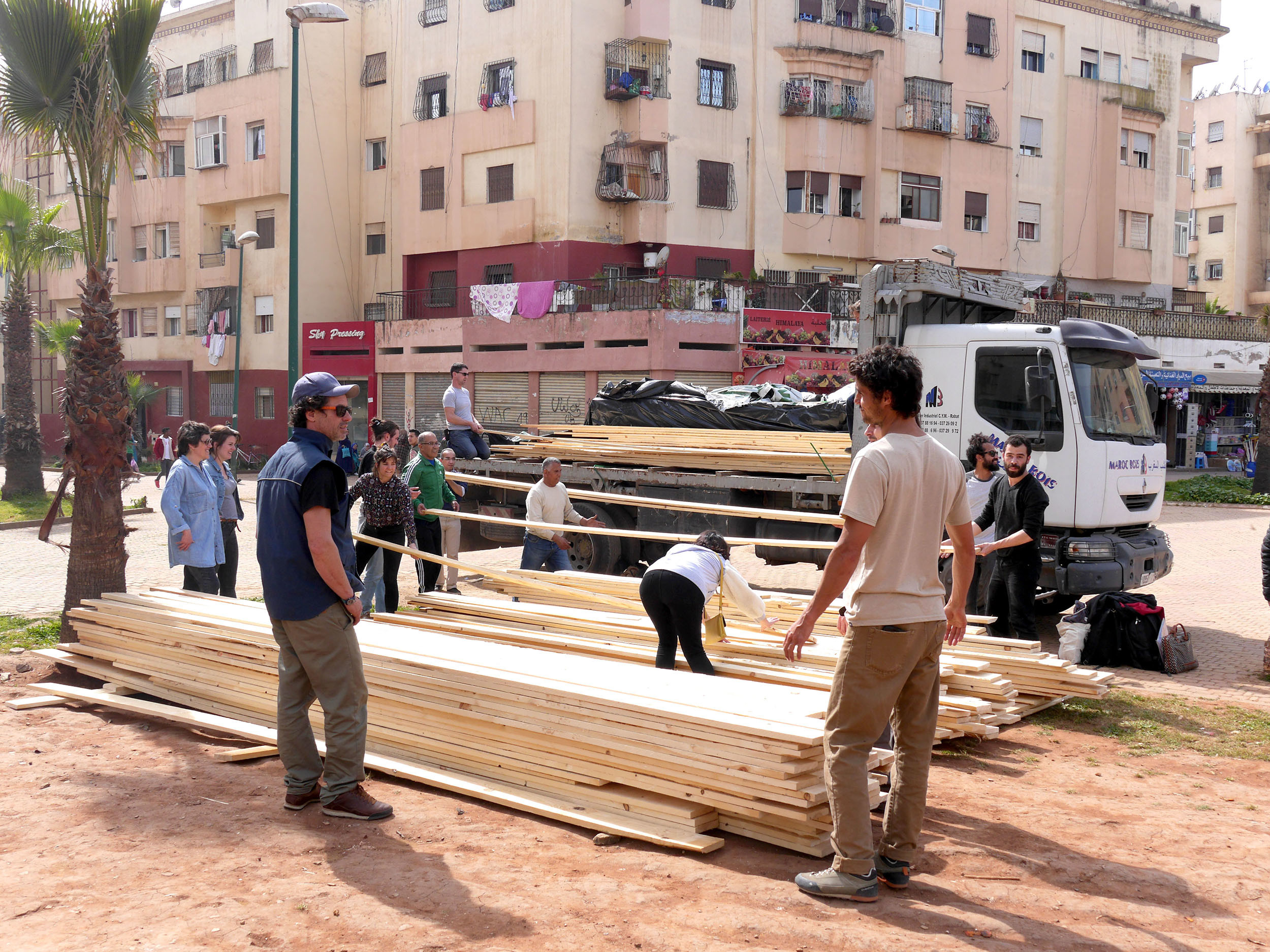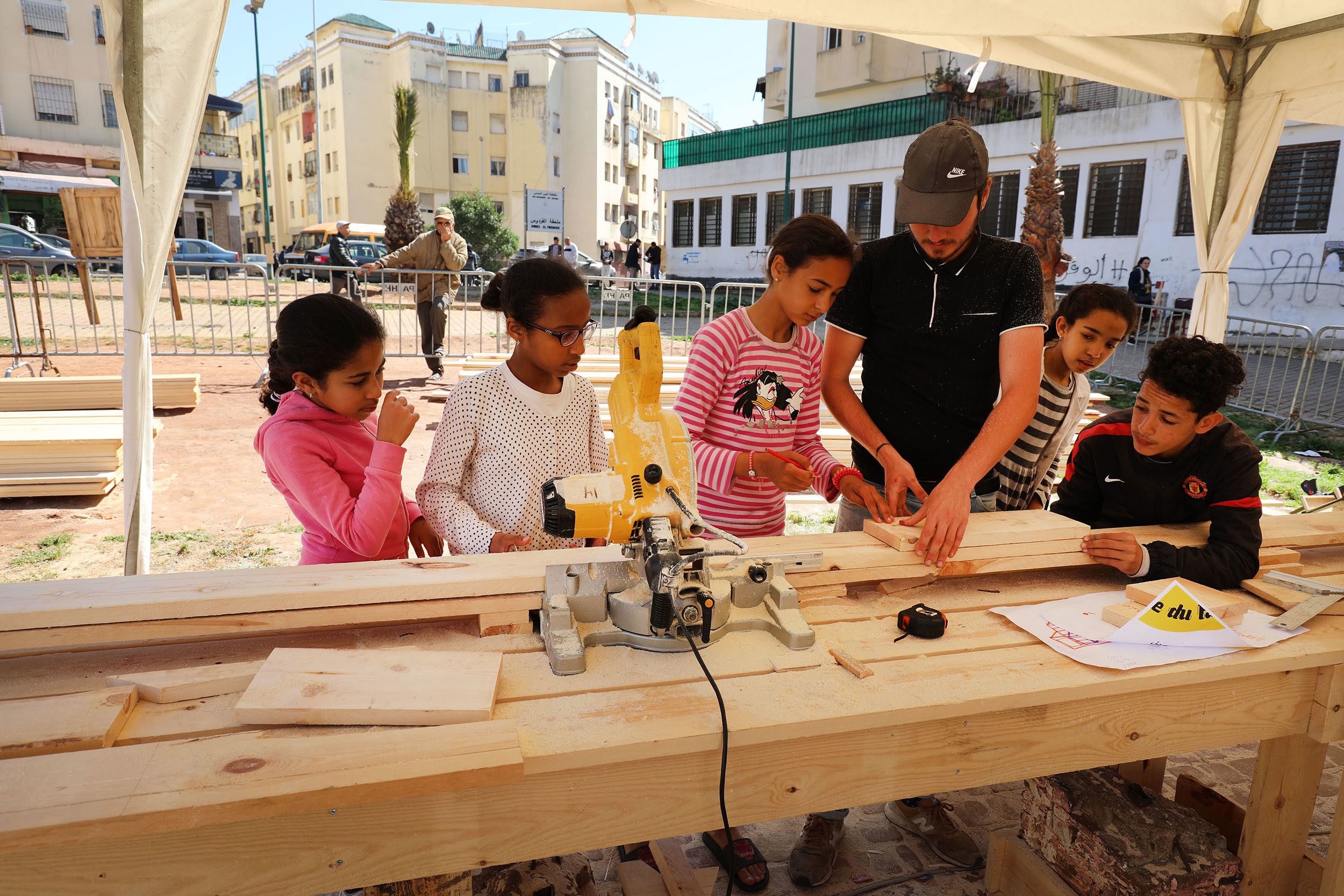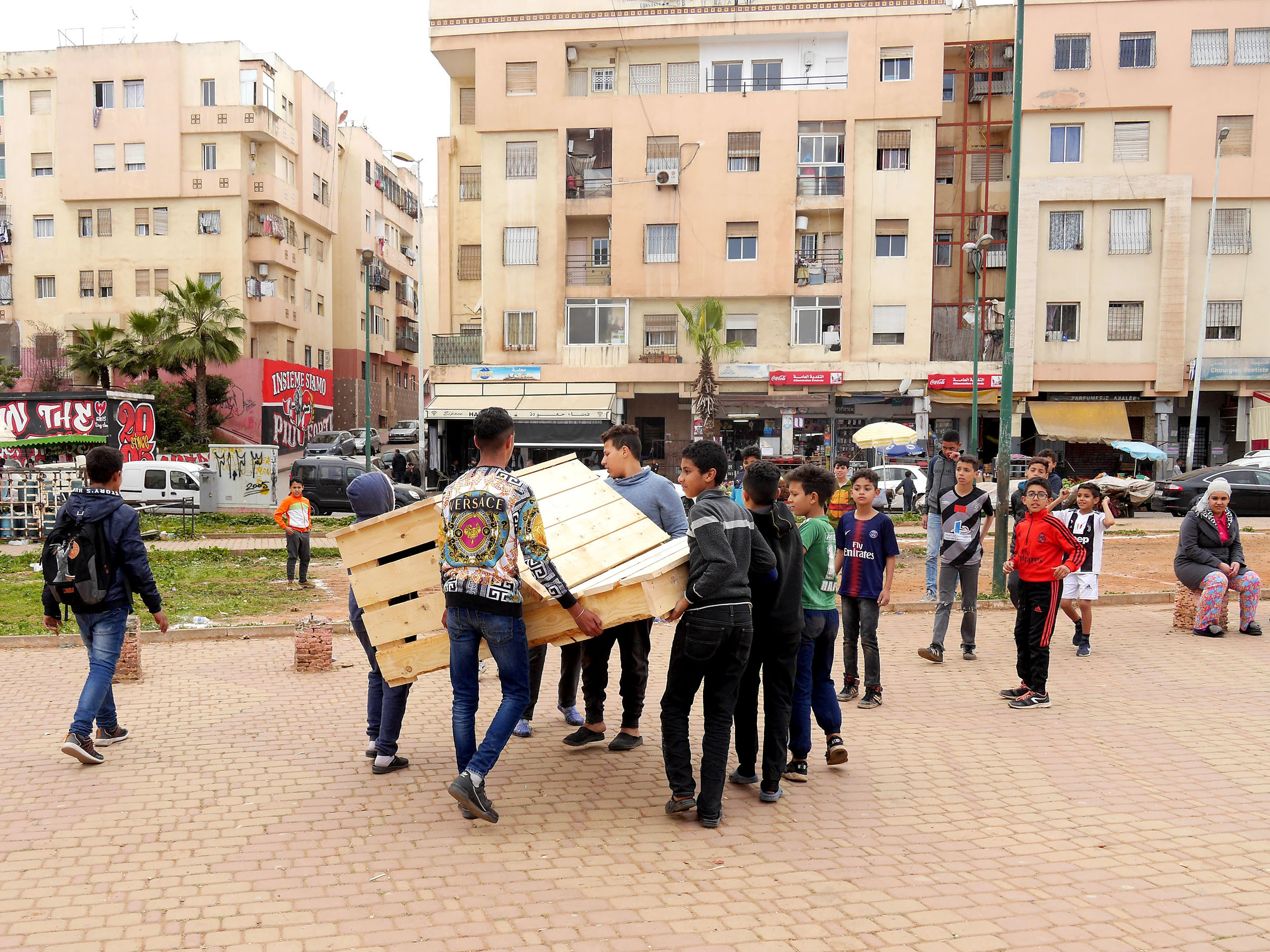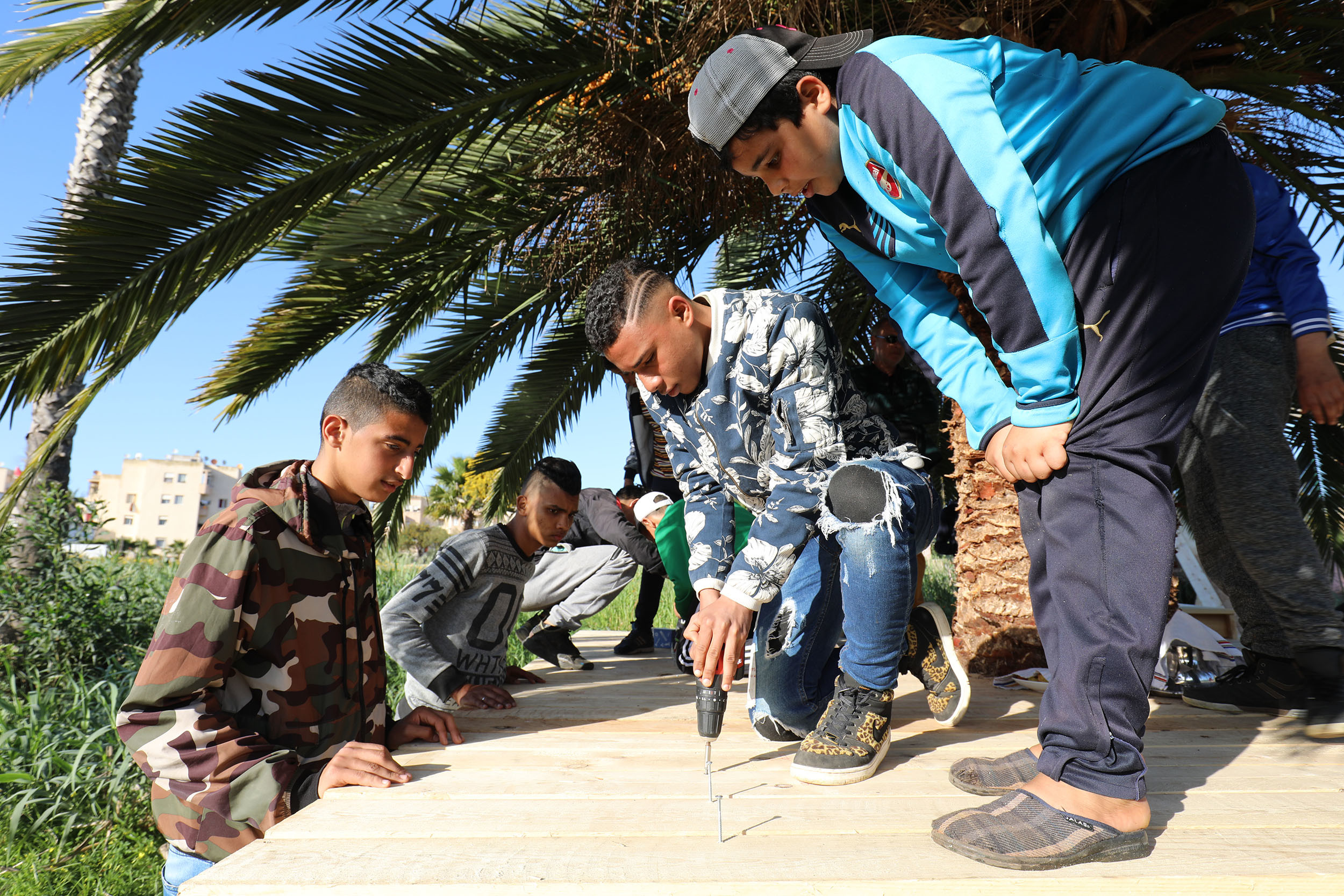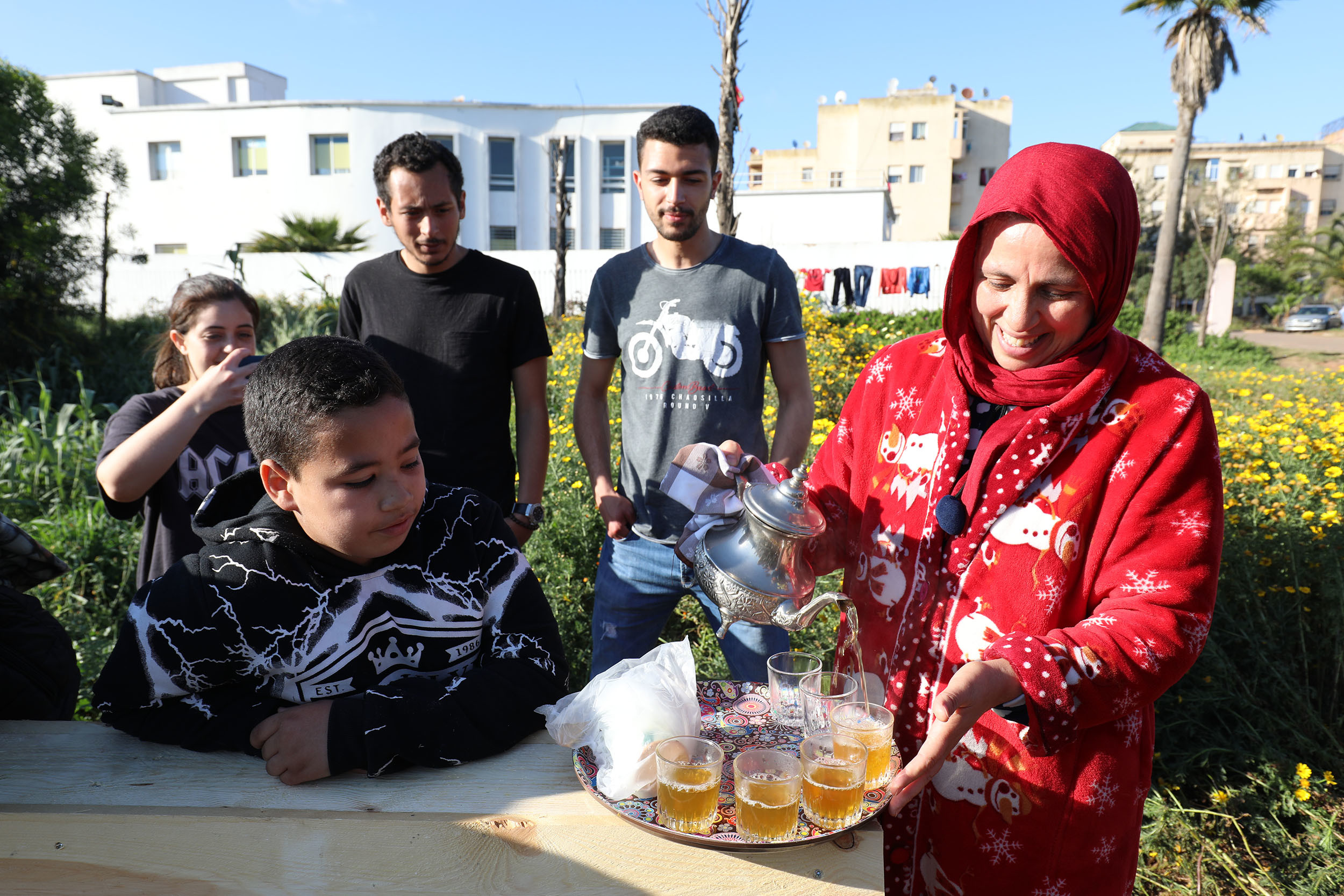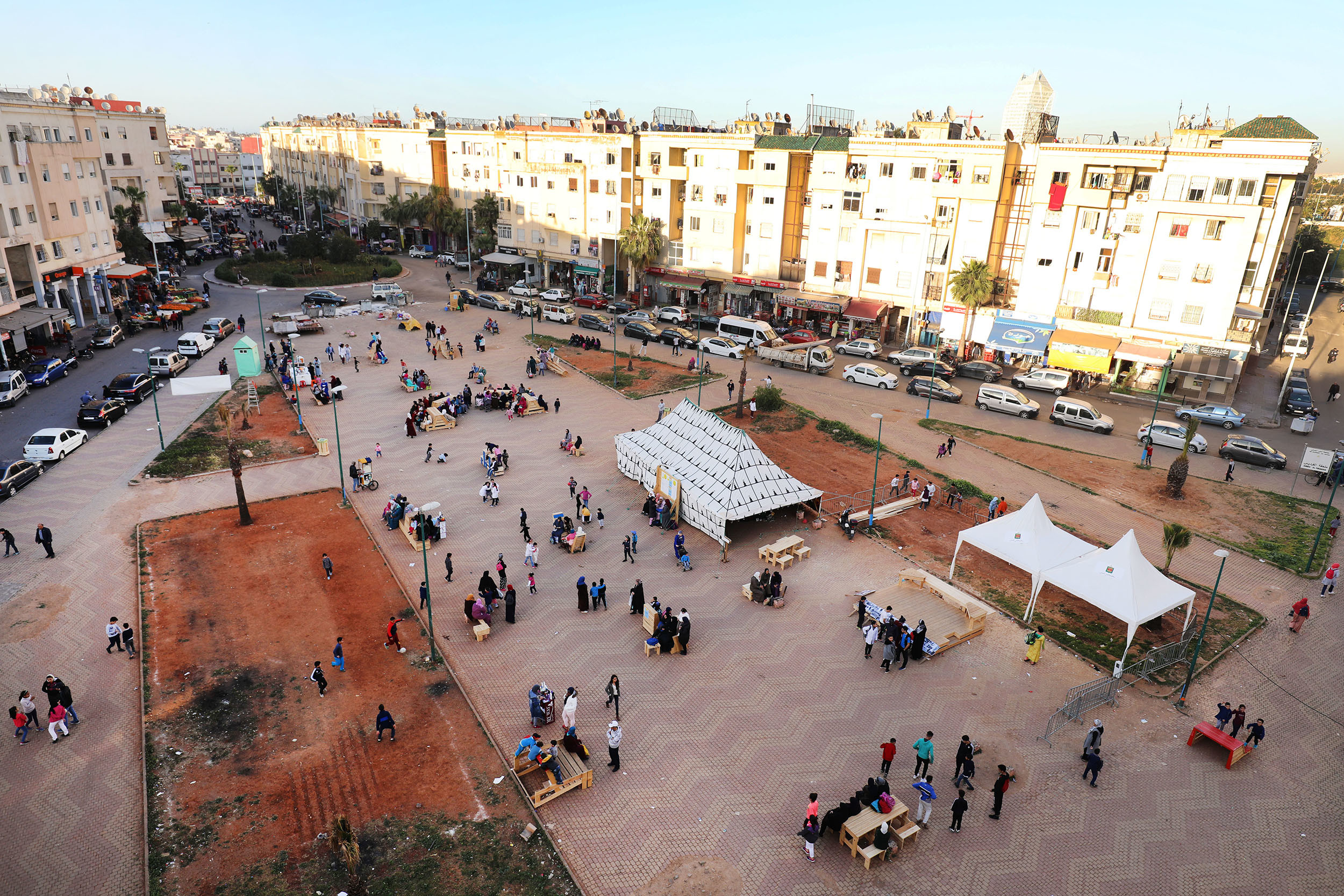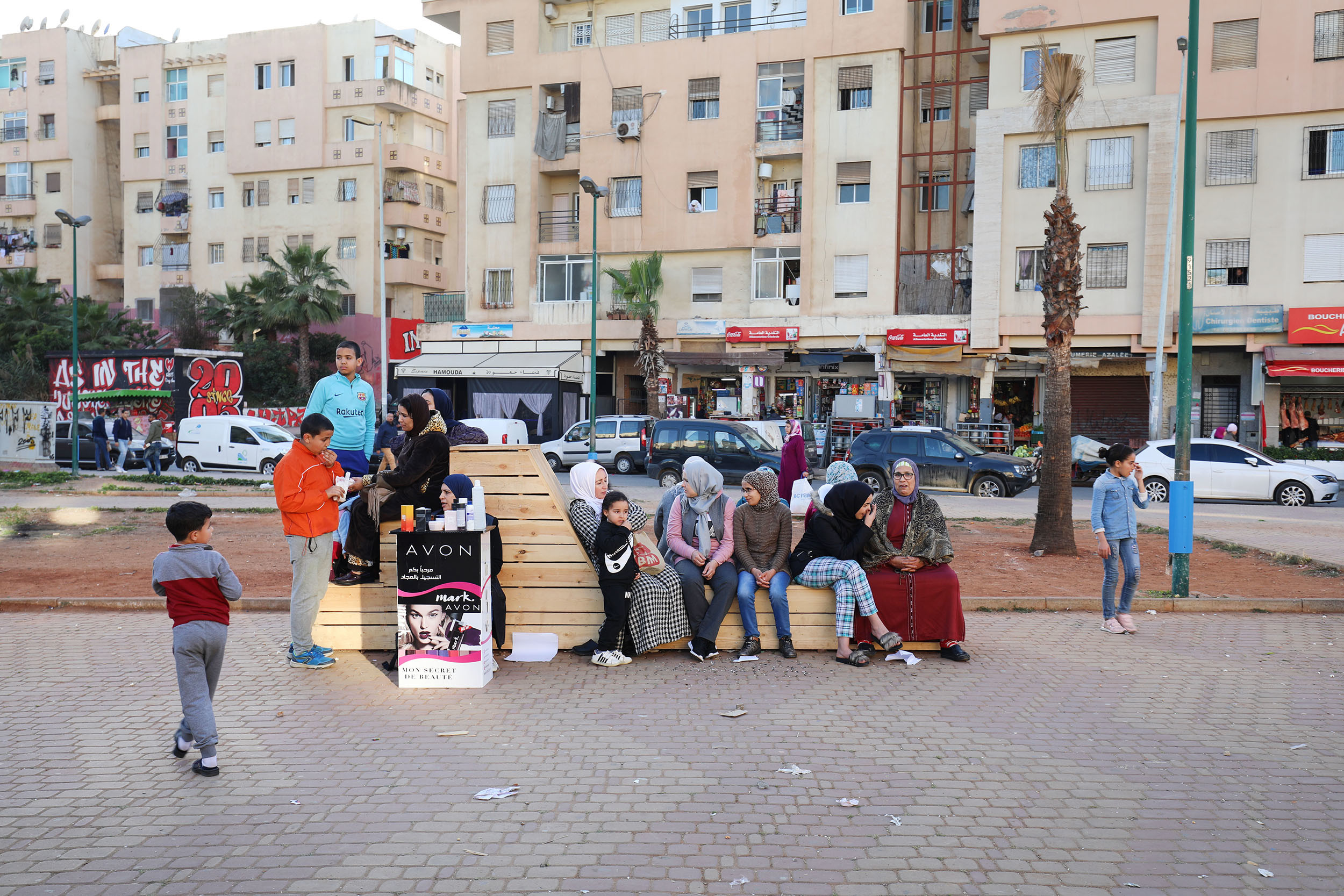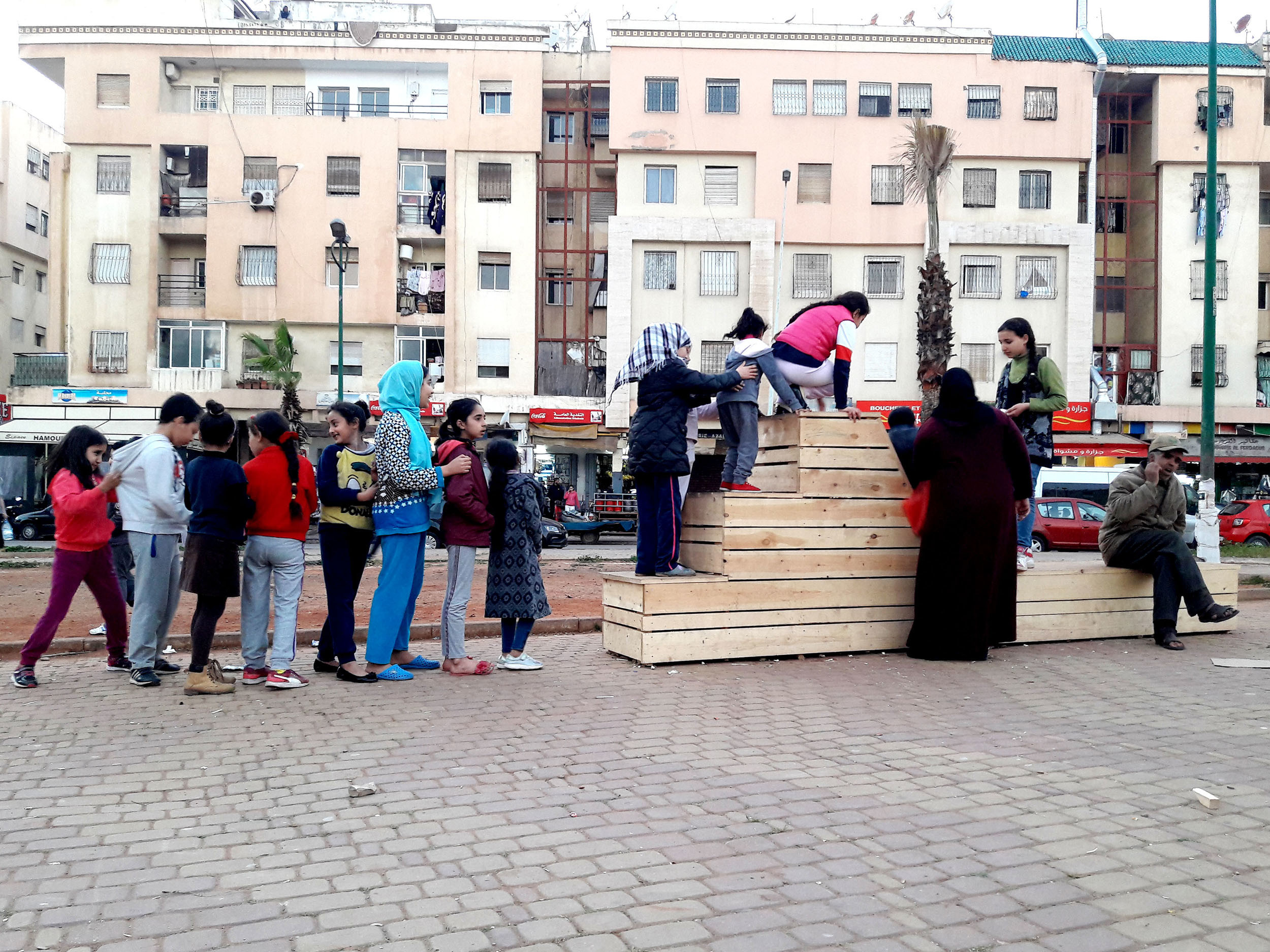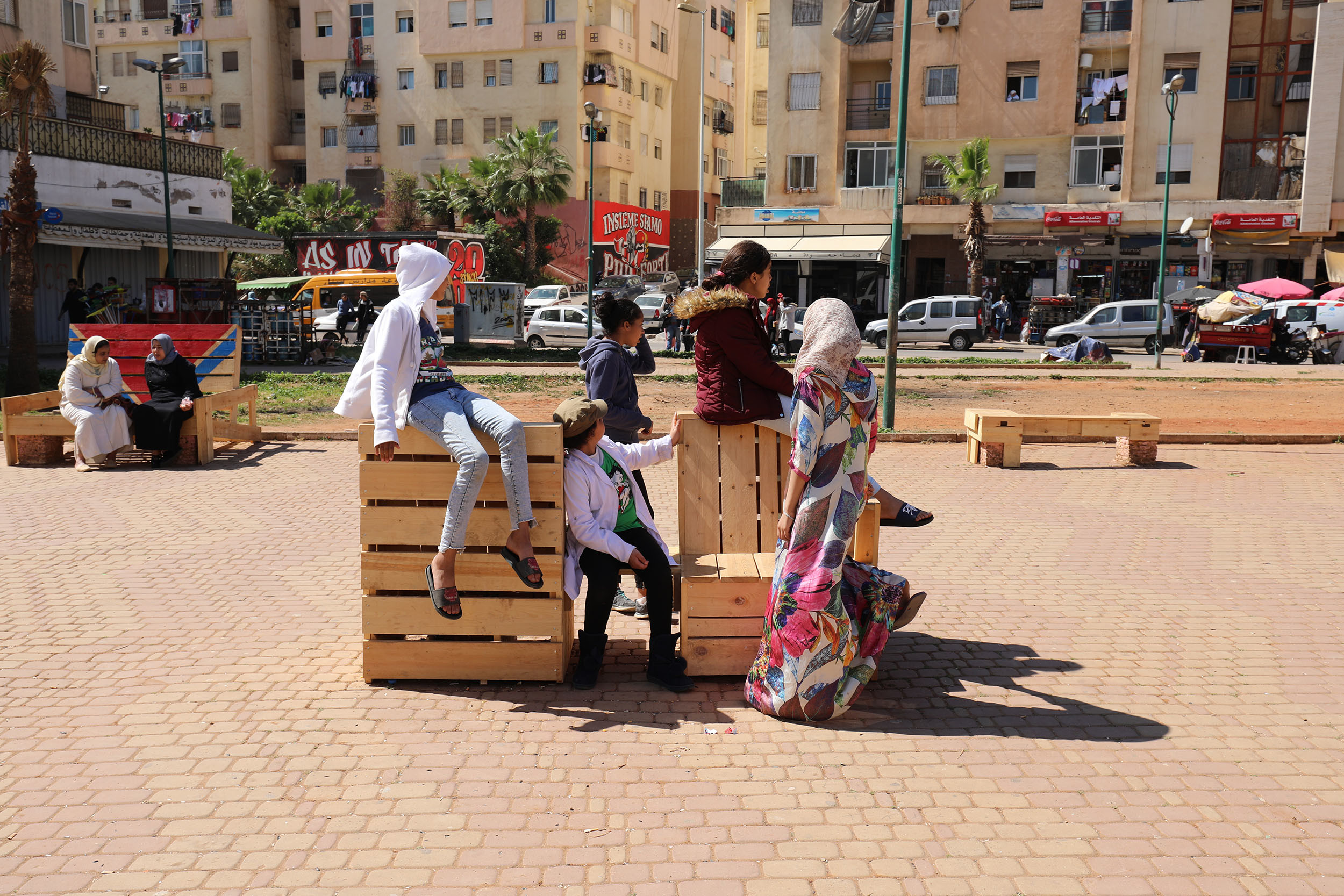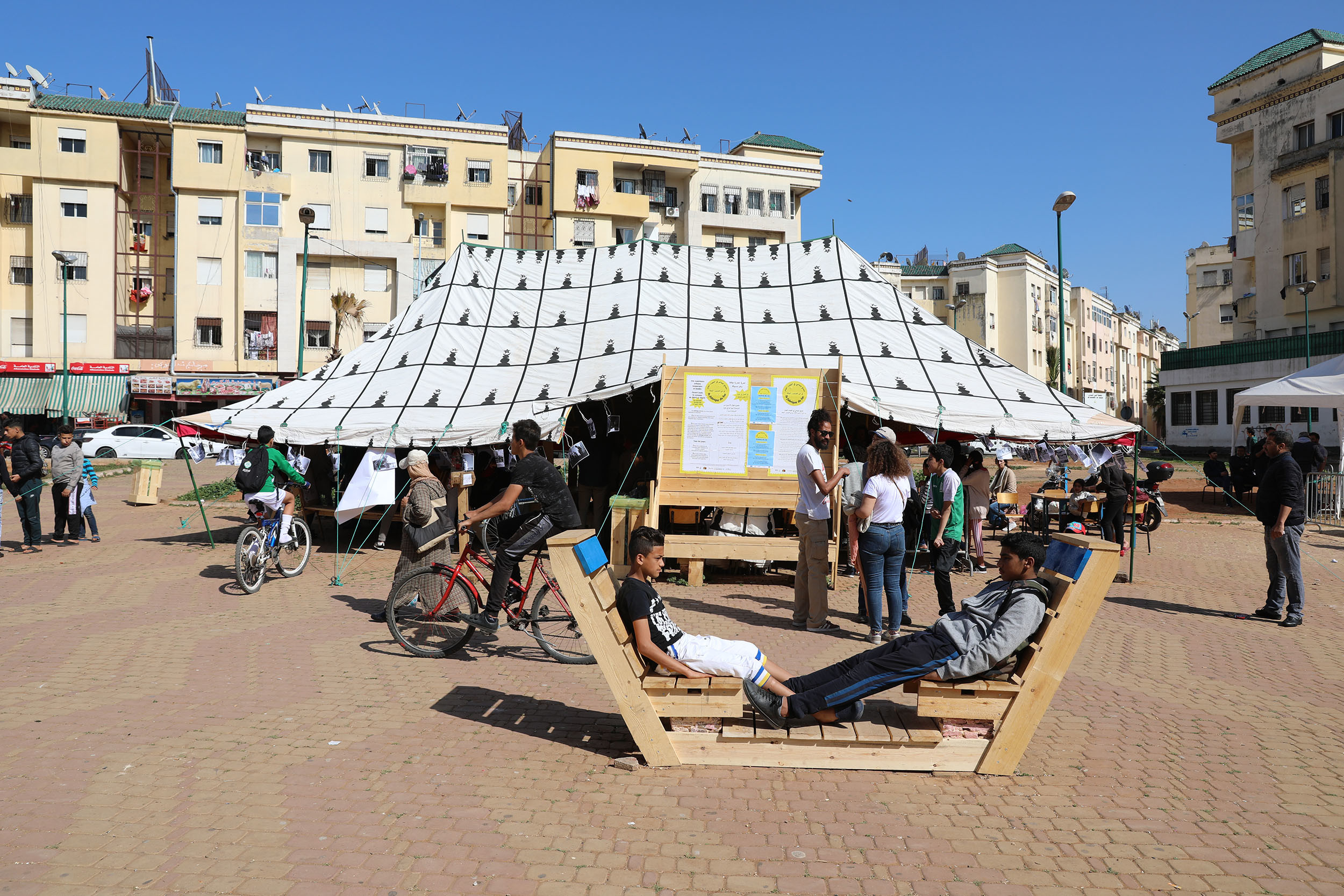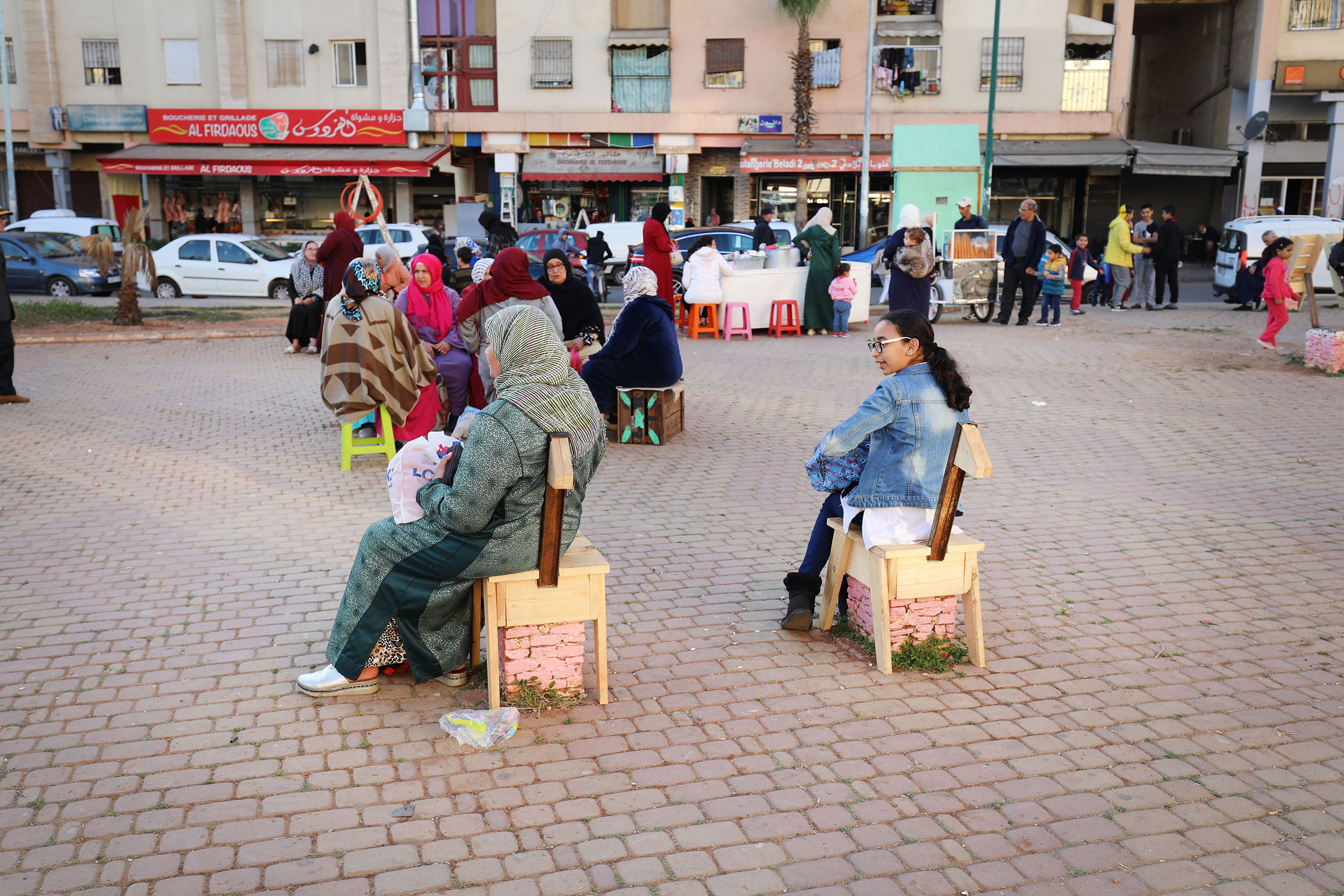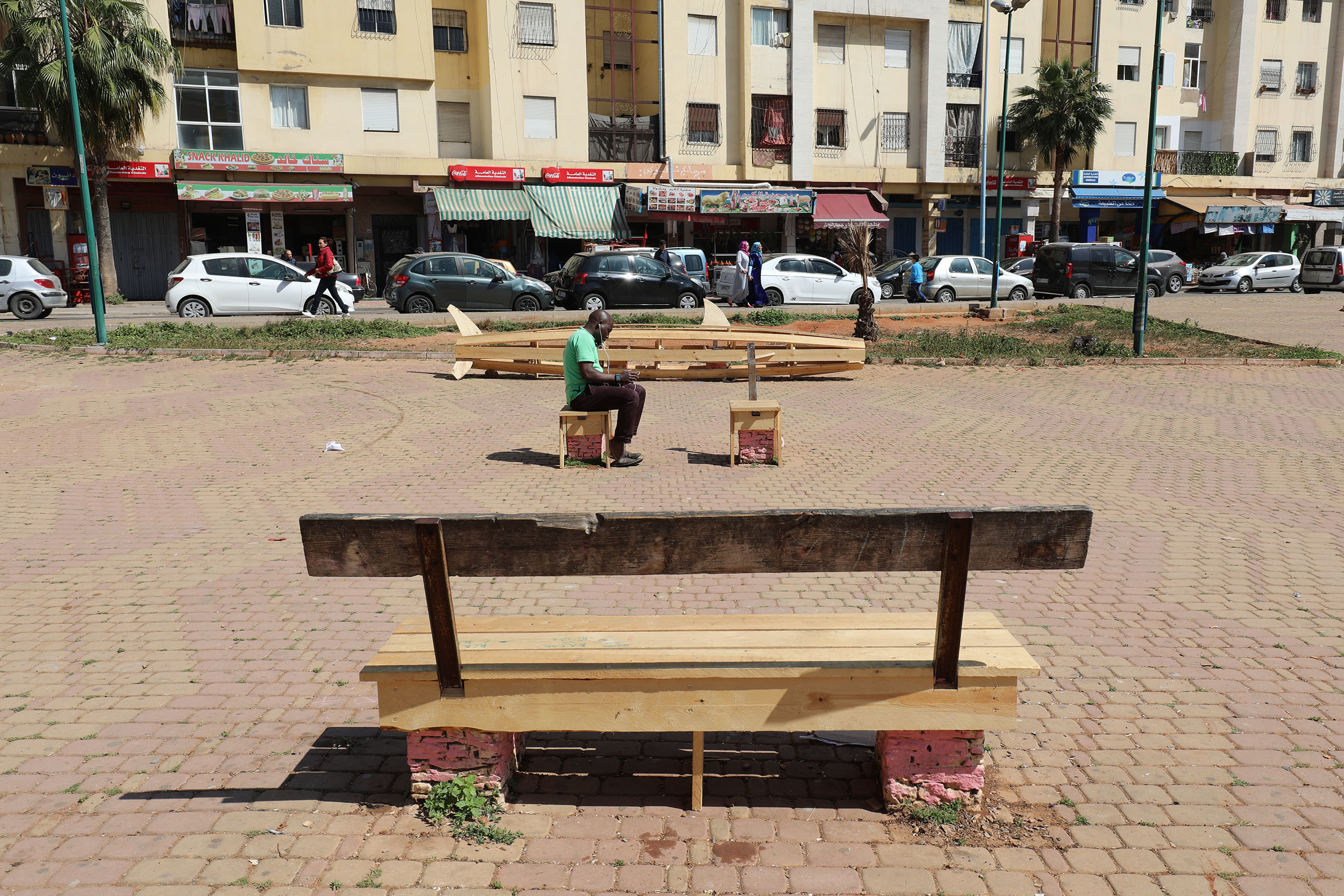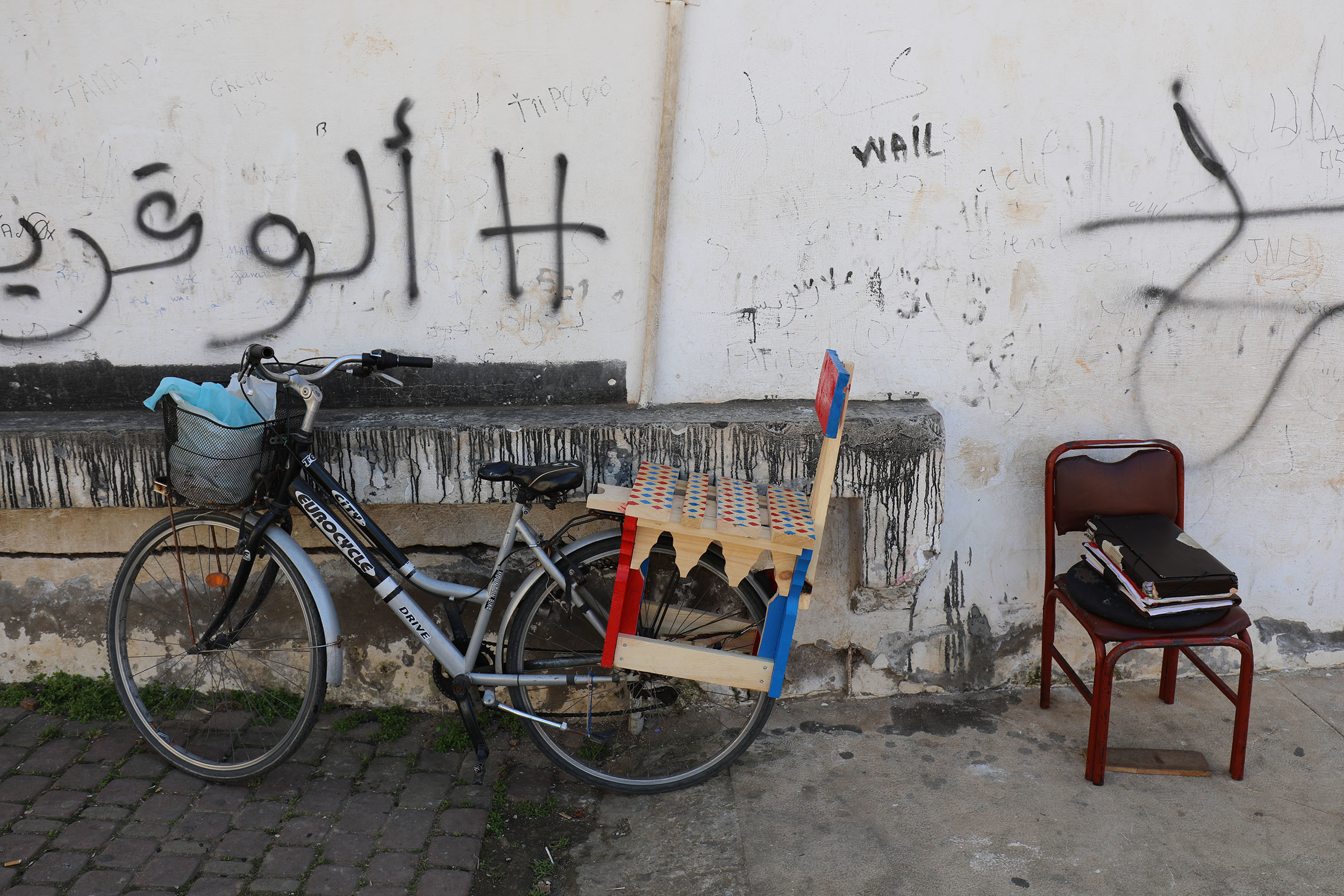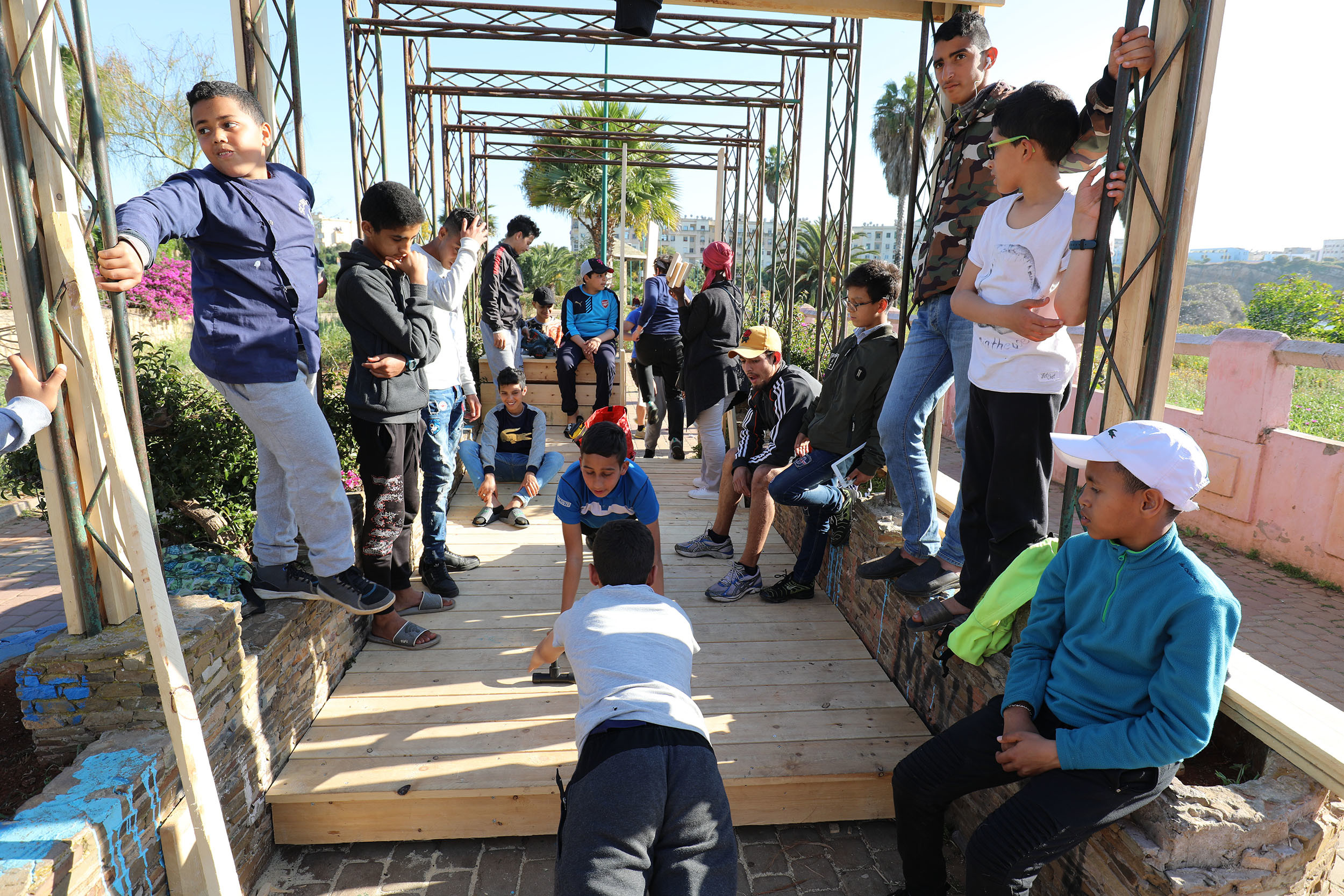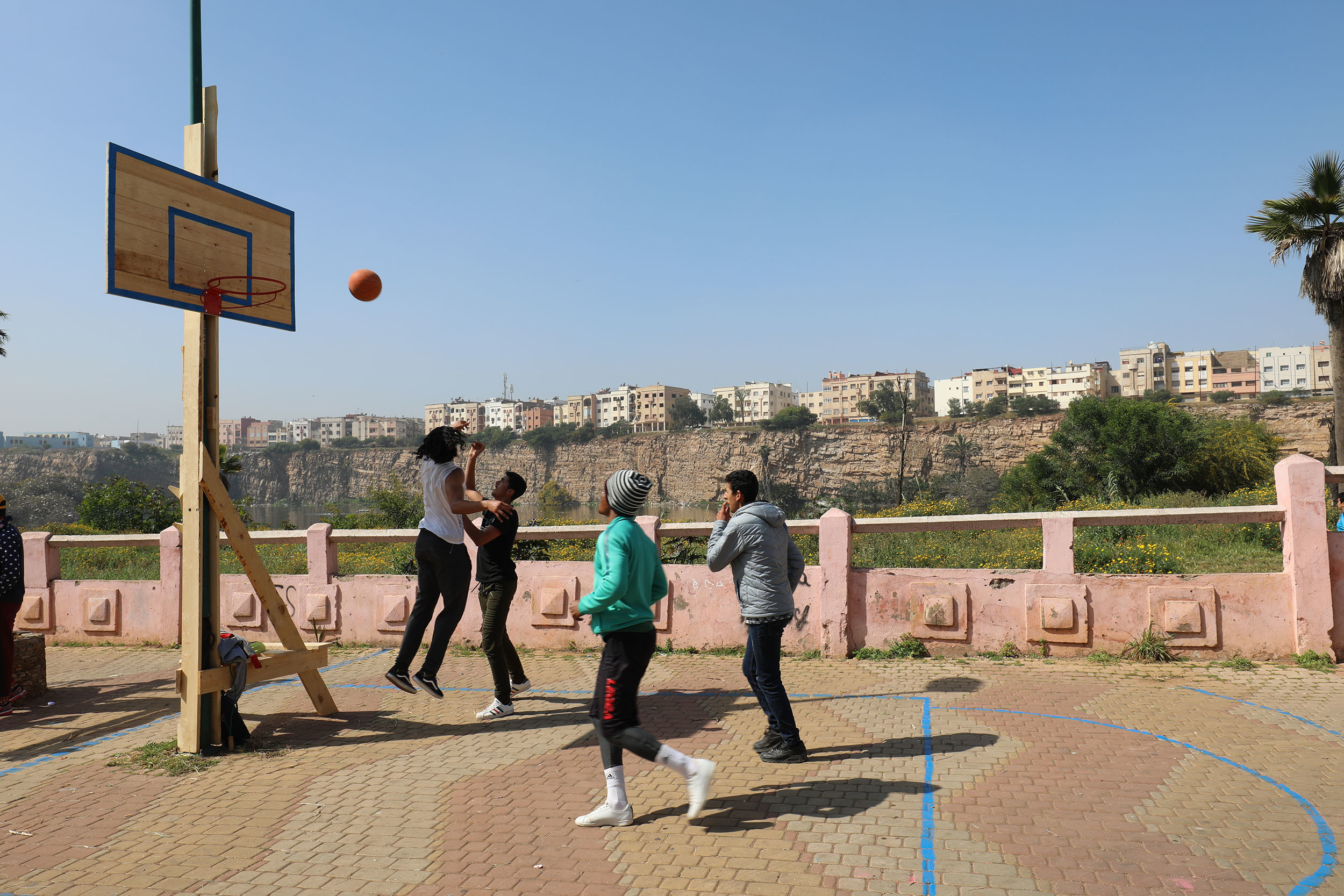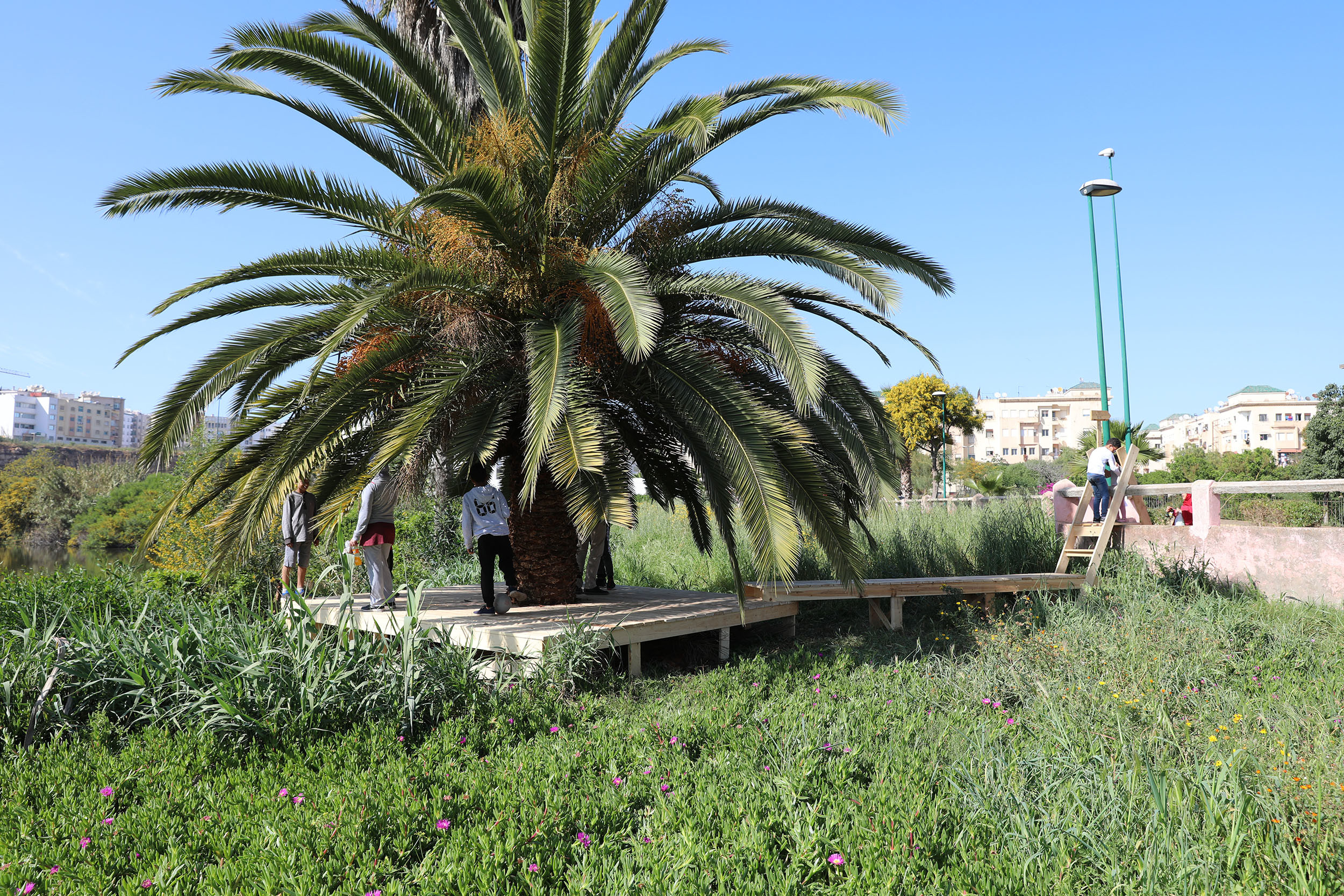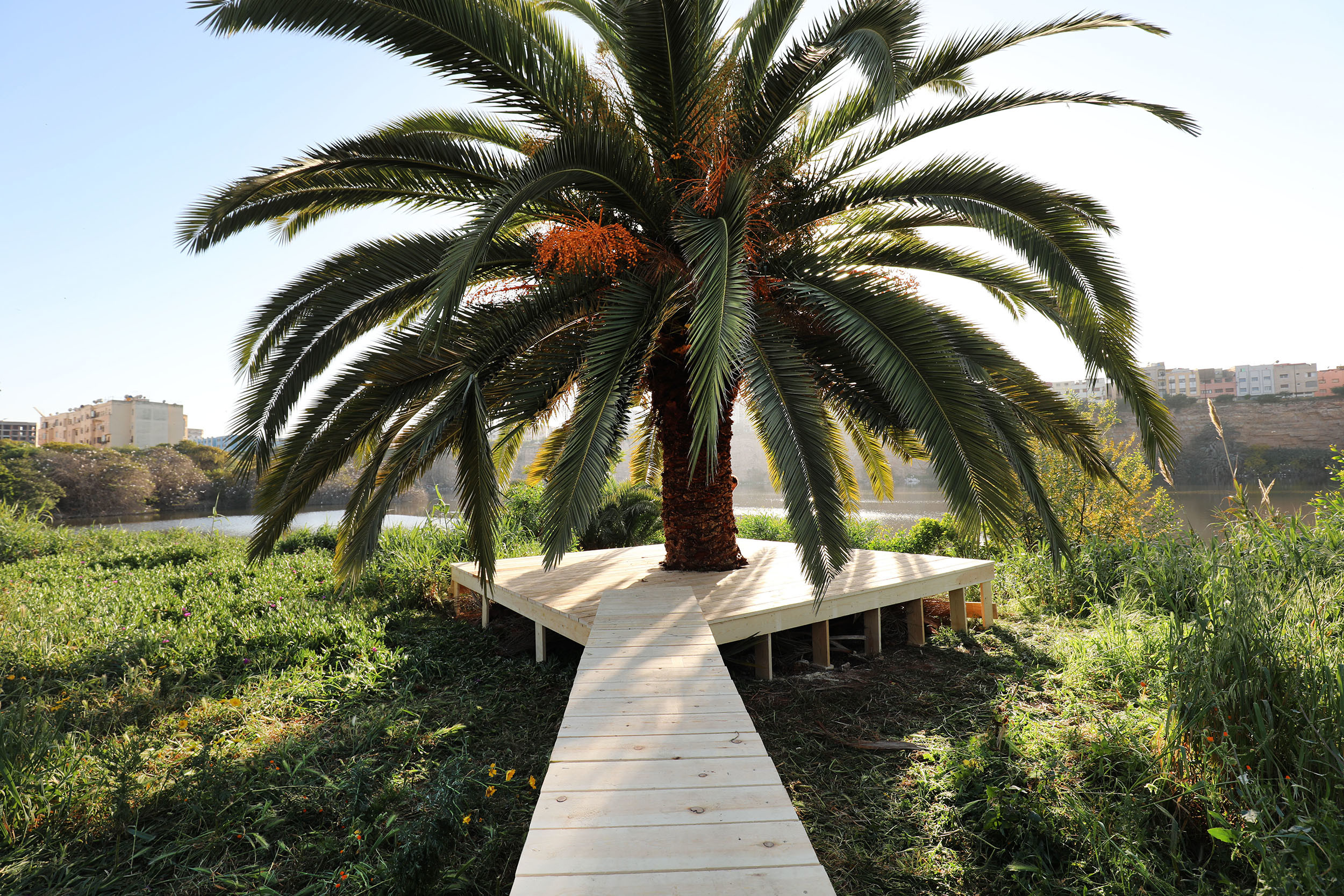
March 2019
The Lake Factory #1
El Oulfa neighbourhood
Casablanca
Morocco
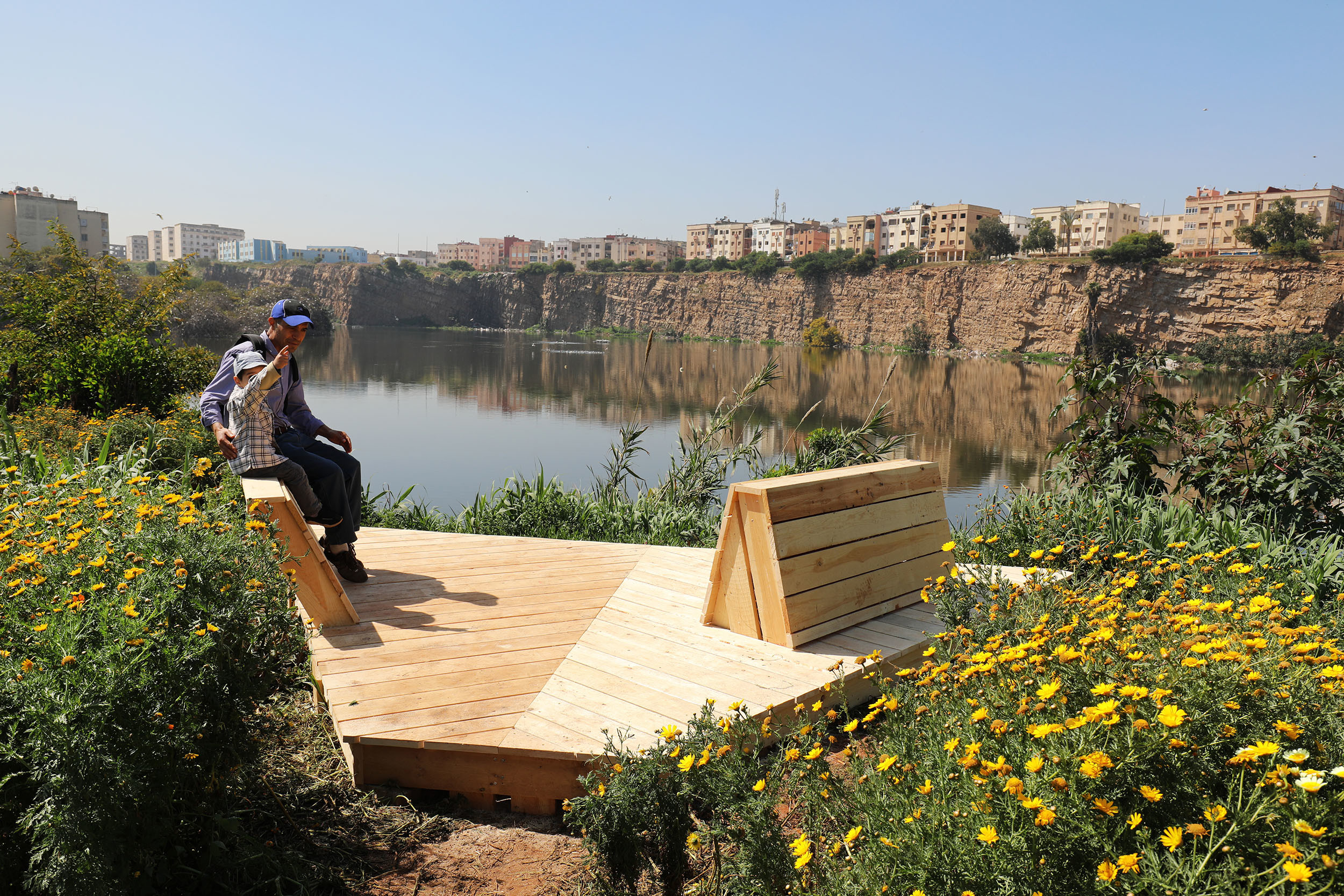
El Oulfa is a mainly residential area on the outskirts of Casablanca. The Al Firdaous square and the El Oufa lake are two major public spaces of the district but their state of degradation strongly constrains their daily appropriation by the inhabitants.
The lake, a real oasis in the heart of the city, is a former quarry transformed into a water reservoir. Urbanization has gradually come to surround it without integrating it into the district. Only a pedestrian path along the banks has been created. This nugget of nature is unfortunately very polluted.
The square, a true urban centrality was equipped with many benches, which were very degraded. Far from being neglected, it is a lively and active crossroads, where people meet, children play and street sellers set up shop.
We propose to intervene in the form of a collective urban factory residence whose objective is to modestly engage in the concrete and symbolic reconquest of these spaces, through an in-situ action. This residence aims to create a collective and positive dynamic among the inhabitants and to make the public authorities aware of the interest and urgency to act on these spaces, in particular on the lake.
We set up an ephemeral workshop for the design and construction of urban furniture in Al Firdaous Square to explore the possibilities of using the square and the lakefront by equipping them with small temporary furniture, useful as poetic, collectively thought out and built. We decide to come without plans and gradually develop a furniture programme based on observations made in the field and the needs expressed by the inhabitants.
We organize a student workshop on the future of Lake El Oulfa in order to imagine the possible vocations of this extraordinary place on a larger scale. This workshop brings together architecture students from Casablanca, Bordeaux and Toulouse.
Last
projects
> all projectsAt the crossroads of art, territories and populations, our approach aims to promote the transition to sustainable, shared and welcoming cities, by proposing alternative ways of imagining and building our living environment and by exploring new forms of public space.

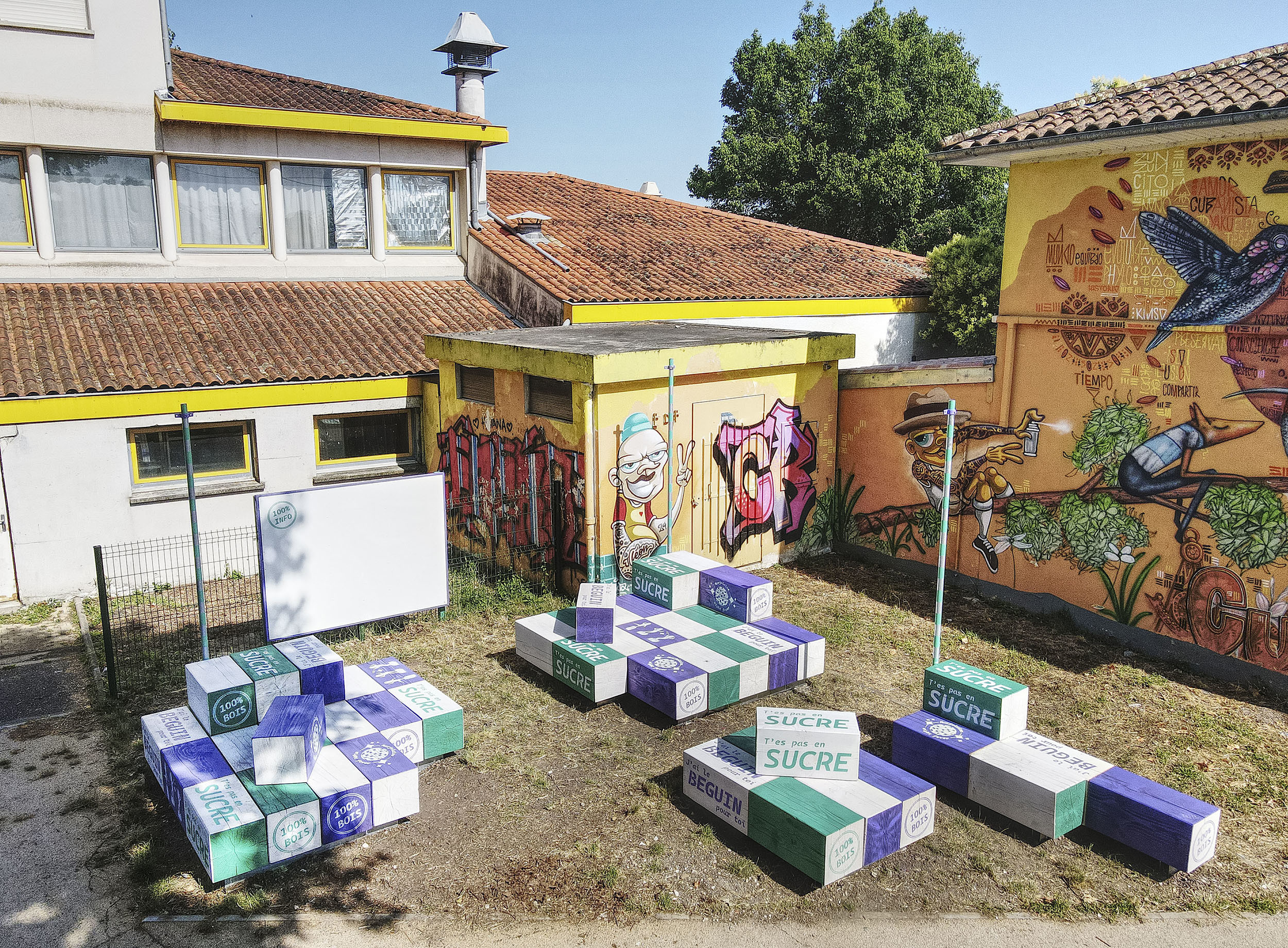
A crush on Marjolaine
Freedom pavilion "Bacalanhood" - Bordeaux

The Champicnic table
Pessac

The Secret Balconies # 3 – The Pinède balcony
Montpellier

Common lands trail
Exhibition Nouvelles Saisons, arc en rêve centre d'architecture Bordeaux
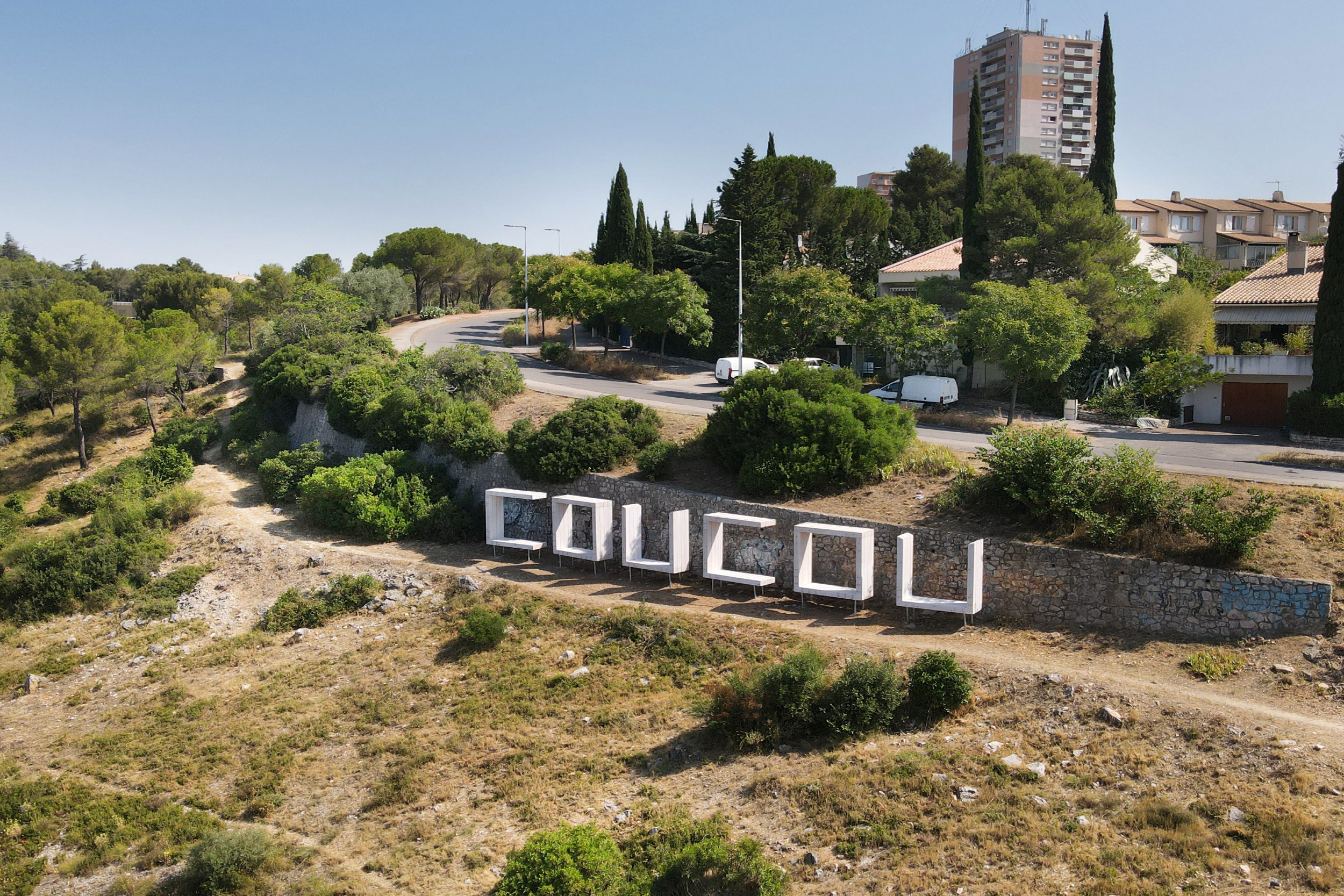
The Secret Balconies # 2 – Balcony des Hauts de Massane
Montpellier

The Secret Balconies # 1 – Balcony Larzac
Montpellier


